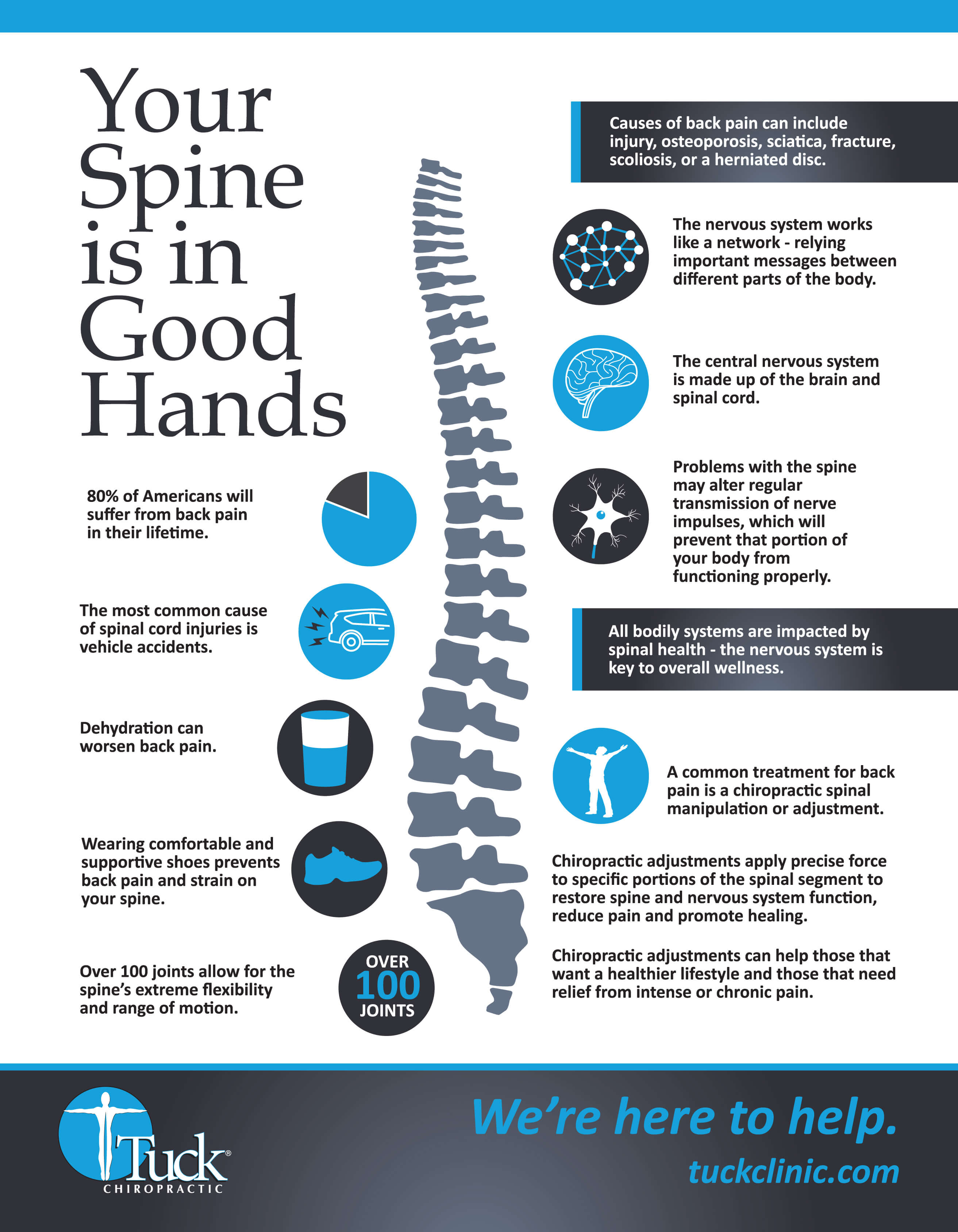The Result Of Position On Back Pain: Guidelines For Keeping Good Positioning Throughout Your Daily Regular
The Result Of Position On Back Pain: Guidelines For Keeping Good Positioning Throughout Your Daily Regular
Blog Article
Content Create By-Houghton McIntyre
Preserving proper stance isn't practically sitting up directly; it has to do with aligning your body in such a way that supports your spinal column and minimizes the risk of pain in the back. The way you sit, stand, and move throughout the day can significantly influence your spinal wellness. Yet exactly how specifically can you guarantee good placement constantly, even throughout hectic days full of different activities? Let's dig deeper right into the subtle yet impactful changes you can make to your day-to-day routine to maintain your back satisfied and healthy.
Relevance of Appropriate Position
Proper posture is crucial in preserving a healthy back and stopping discomfort. When you rest or stand with great position, your spinal column remains in placement, decreasing strain on your muscular tissues, ligaments, and joints. This placement allows the body to disperse weight uniformly, stopping excessive stress on specific areas that can result in pain and discomfort. By maintaining your back appropriately lined up, you can also improve your breathing and digestion, as slouching can compress body organs and restrict their capability.
Additionally, preserving good stance can boost your overall look and self-esteem. When you stand tall with your shoulders back and head held high, you exude self-confidence and show up even more approachable. Great stance can additionally make you really feel a lot more energized and sharp, as it advertises proper blood flow and enables your muscles to work efficiently.
Incorporating appropriate pose into your day-to-day regimen, whether resting at a workdesk, strolling, or working out, is important for protecting against neck and back pain and promoting total wellness. Bear in mind, a little adjustment in exactly how you hold on your own can make a substantial difference in exactly how you really feel and work throughout the day.
Common Postural Mistakes
When it involves maintaining good position, numerous individuals unwittingly make typical blunders that can contribute to back pain and pain. One of one of the most common errors is slouching or hunching over while resting or standing. Suggested Resource site on the spinal column and can bring about muscle discrepancies and discomfort over time.
Read Home Page is overarching the reduced back, which can flatten the all-natural contour of the spinal column and trigger pain. In addition, going across legs while sitting may feel comfortable, yet it can develop an inequality in the hips and hips, bring about postural concerns.
Utilizing a pillow that's too soft or as well strong while sleeping can likewise impact your alignment and add to neck and back pain. Finally, regularly craning https://doctorchiropractic84061.mybuzzblog.com/10271383/check-out-the-numerous-cushion-alternatives-available-for-easing-neck-pain-accompanied-by-expert-guidance-and-recommendations-discover-ways-to-enhance-the-top-quality-of-your-rest to consider displays or adjusting your placement often can strain the neck and shoulders. Being mindful of these usual postural blunders can aid you preserve much better positioning and decrease the risk of neck and back pain.
Tips for Correcting Positioning
To boost your placement and reduce back pain, it's important to focus on making small modifications throughout your everyday regimen. Begin by bearing in mind your pose. When sitting, guarantee your feet are level on the flooring, your back is straight, and your shoulders are loosened up. Stay clear of slouching or leaning to one side. Use ergonomic chairs or pillows to support your reduced back.
When standing, distribute your weight uniformly on both feet, maintain your knees a little bent, and embed your hips. Engage your core muscles to sustain your spine. Take breaks to extend and walk if you have a less active work. Integrate waist pain that strengthen your core and back muscles, such as slabs or bridges.
While resting, use a pillow that sustains the natural curve of your neck to maintain proper back positioning. Stay clear of sleeping on your tummy, as it can strain your neck and back. By bearing in mind these tips and making small changes, you can slowly fix your positioning and minimize pain in the back.
Final thought
Keep in mind, preserving excellent posture is key to preventing pain in the back and advertising back health. By bearing in mind your placement, distributing weight uniformly, and engaging your core muscles, you can decrease strain on your back and reduce the threat of discomfort and injury. Incorporate ergonomic support, take normal breaks to stretch, and strengthen your core and back muscular tissues to maintain correct placement throughout the day. Your back will certainly thanks for it!
